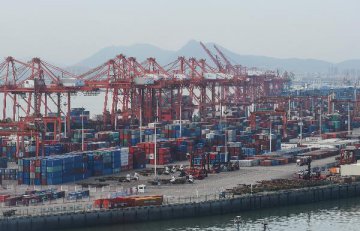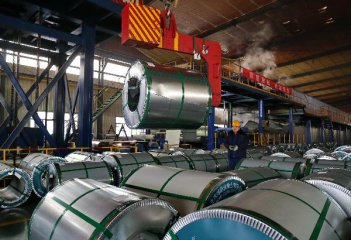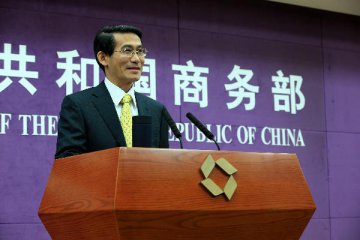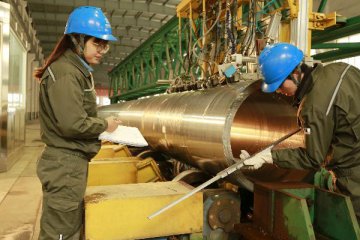
U.S. investigations into China's trade practices will not fix its trade deficit, but will put one of the world's most important trade ties at risk.
The U.S. government Friday formally launched an investigation into China's intellectual property practices under Section 301 of the Trade Act of 1974.
The move comes as the Trump administration fumbles with its trade deficit with China, but the investigation is an approach that was abandoned decades ago.
"China is strongly discontented about such unilateral, protectionist practice," a spokesperson with China's Ministry of Commerce (MOC) said Monday, asking the United States to respect facts and multilateral rules and act with prudence.
INCORRECT PATH
The obscure provision is simply not the answer to today's problem which could be dealt with through dialogue and consultation.
Section 301 allows the U.S. president to impose tariffs and trade restrictions on any country. In the 1980s, the United States used it to force Japan to rein in its exports to the U.S.
It sounds simple, but the reality is much more complex. Sanctions may contravene the United States' membership to the World Trade Organization (WTO). The country has rarely used the provision since the WTO came into being in 1995.
Hitting China with high tariffs would possibly draw retaliation. Down this path lies a trade war, from which no winner would emerge, for compelling reasons.
The Institute of International Finance (IIF) warned that a trade war between the United States and China will hurt not only Chinese manufacturers, but also upstream suppliers and downstream distributors, such as U.S. retailers.
Chinese exports to the United States lower U.S. consumer prices by 1 to 1.5 percentage points. In 2015, trade with China allowed American families save 850 dollars, according to a study by the U.S. China Business Council.
The trauma of a trade war would spill over to the rest of the world, according to Zhang Jianping from the MOC.
In an interconnected world, no country is independent in the global value chain. Everyone would be affected, he added.
RIGHT WAY
It is structural issues that contribute to the trade imbalances between the two countries.
"Tracking a trade deficit is misleading. All that [trade deficit] means is that we in the United States consume more," said Tori K. Whiting, a research associate at Washington-based think tank The Heritage Foundation.
To address the imbalances, both countries should carry out structural reforms rather than just narrow the trade deficit.
China has made progress. Its current account has become more balanced in recent years. The share of its current account surplus to gross domestic product dropped below 2 percent in 2016, compared with about 9.9 percent in 2007.
The bilateral trade imbalances between the United States and China can be solved through more trade and investment rather than a trade war, the IIF said.
To balance bilateral trade, the two countries agreed to take action to expand trade in beef and chicken, and increase access for U.S. financial firms, as part of the 100-day action plan.
It is better for both sides to address economic differences such as trade imbalances through candid dialogue, said Hong Lei, Chinese Consul General in Chicago.
"Further opening up markets, promoting bilateral investment, and strengthening trade ties at a local level could contribute to stronger and closer economic ties between China and the United States," he said.
BARGAINING CHIP
The IIF pointed out that the U.S. trade deficit is more of a political issue than an economic concern.
The Washington D.C.-based think tank found that the U.S. trade deficit has not deteriorated in the past decade. From 2006 to 2016, the U.S. deficit of goods trade decreased from 6 percent to 4 percent of its GDP. Considering its surplus in the service trade, the U.S. total trade deficit was only 2.7 percent of GDP in 2016.
The U.S. government may use the investigation as a bargaining chip to gain more access to China's service sector, advanced manufacturing and other industries with high added value, Zhang said.
The imbalance of U.S.-China trade was not built in one day, so it is unrealistic to expect it to be resolved overnight. "It takes time and we have to be patient," he said.






















Latest comments